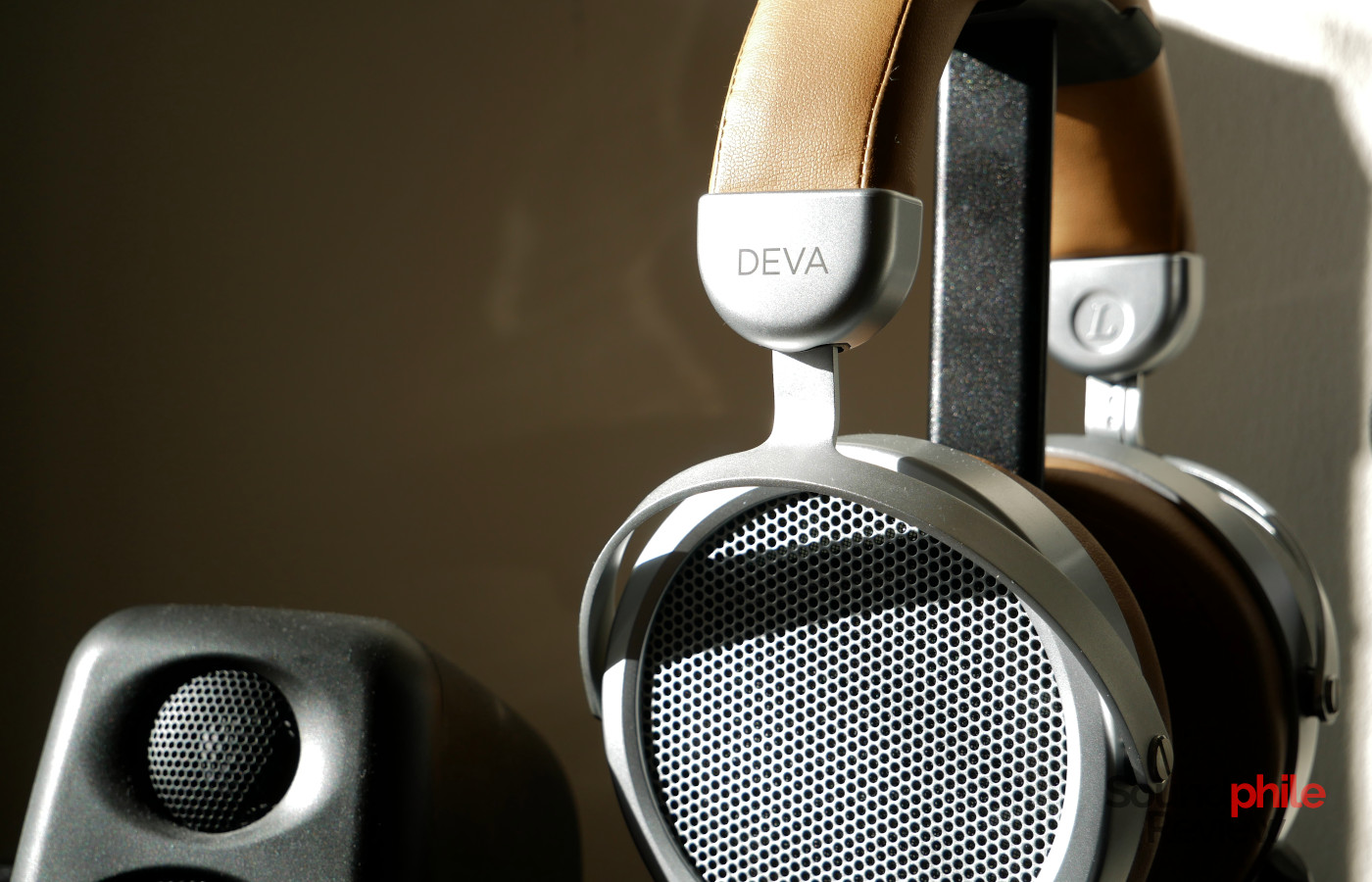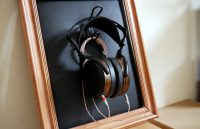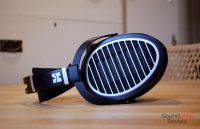When HiFiMAN decided they wanted to go the wireless route, they decided they would do it their own way. Bluetooth headphones usually incorporate all the electronics that allows the Bluetooth connection to be. The HiFiMAN Deva opts for an external add-on module, the Bluemini, which can be removed to use the headphones with a cable. HiFiMAN managed to achieve something rare: creating a headphone that works perfectly well in both wired and wireless modes, and which is not limited to either.
Disclaimer: this unit came as a loan from HiFiMAN. The Deva has an official MSRP of $299 with the Bluemini included and $219 without it.
TL;DR: recap
| Pros |
Cons |
| + Relatively balanced signature
+ Extraordinary soundstage and imaging + Very good resolution + Large selection of codecs + Great battery life + Outstanding value |
– Mids lack presence
– Terribly stiff cable – Microphone is bad |
Rating: 9/10
Packaging & Accessories
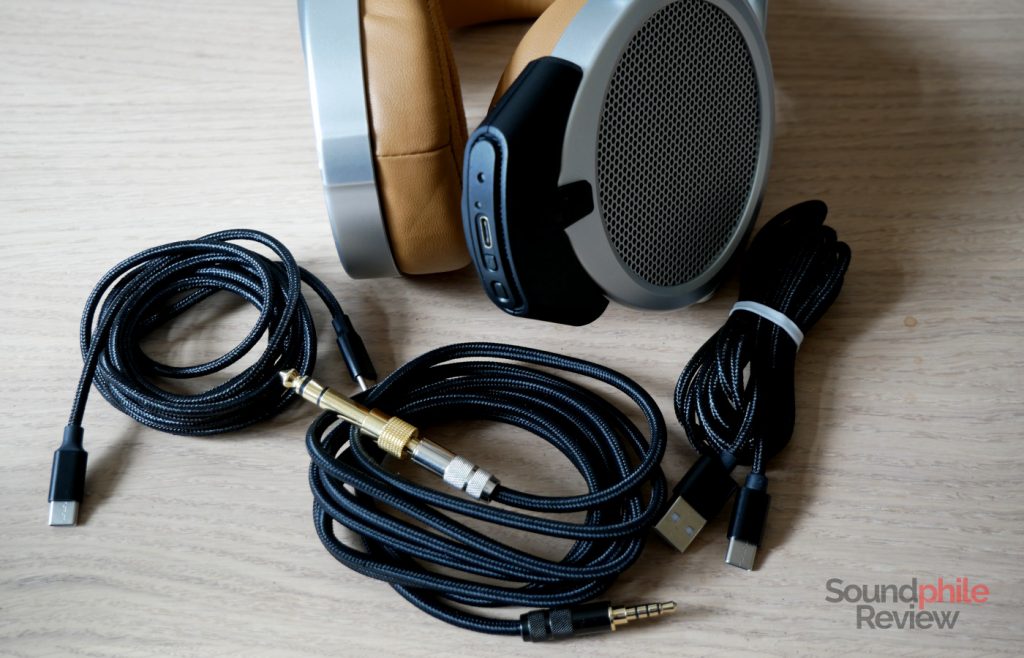
The box is quite simple: it’s a cardboard box that contains pre-shaped foam which holds the headphones, a USB-A to USB-C cable, a USB-C to USB-C cable and a 3.5 mm to 3.5 mm jack cable with a 3.5 mm to 6.3 mm adapter.
Design & Comfort
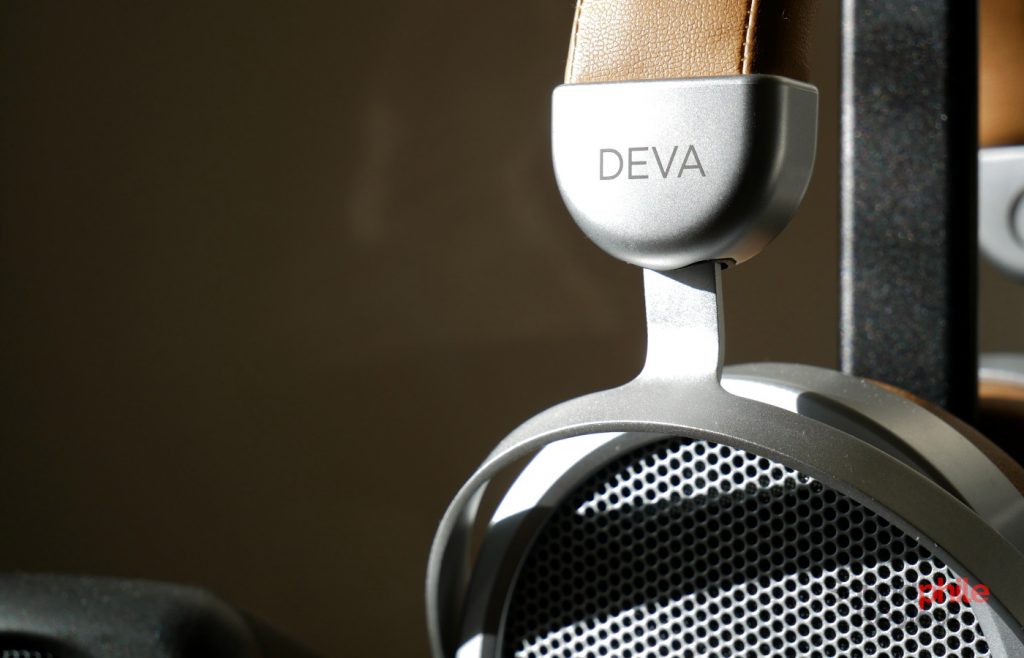
The HiFiMAN Deva are the first headphones in the new line-up by HiFiMAN to sport the new design the brand is using for newer products: it includes a new shape for the earcup frame and a new headband, the latter of which is also being used on the top-of-the-line products (e.g. the HE6SE v2 and the HE-R10P). It’s actually quite a modern and pleasant design, surely different from the mass of lookalikes that plagues the market. The left earcup has a female jack connector for the cable; the good news about it is that it is a TRRS connector, so you can actually use a balanced cable if you so wish. There’s a cable that goes from the left earcup to the the right one and you can spot it by looking at the gimbal.
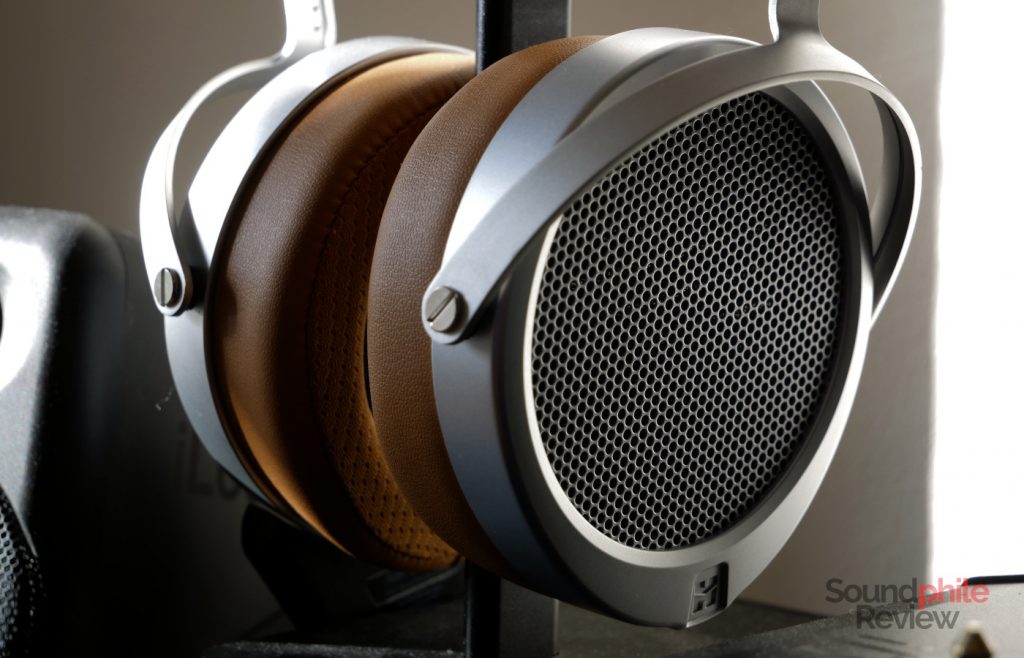
The general aim of the design seems to be making the headphones look like they’re made entirely out of metal and leather, but the earcups and the two ends of the headband are actually made of plastic. The leather is also not the real thing, although it does feel quite good to the touch.
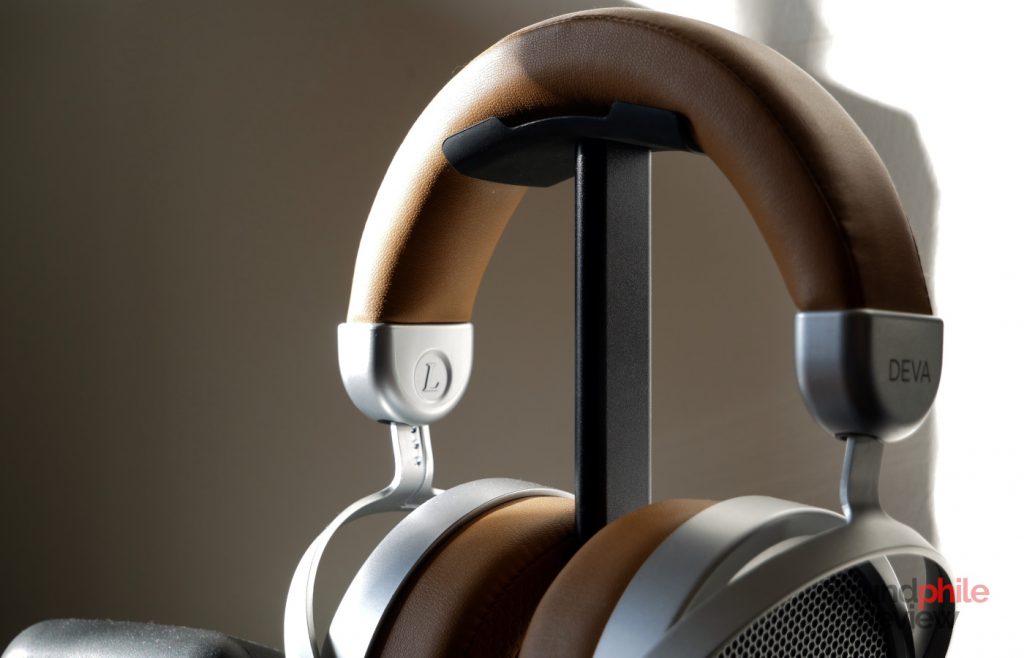
Build quality is more than decent, though I personally think the plastic ends of the headband look a bit poor. There’s no creaking or other issue I can spot, save for some that I can sometimes hear – but which I suspect is actually my hair getting inside the grilles and messing with the drivers.
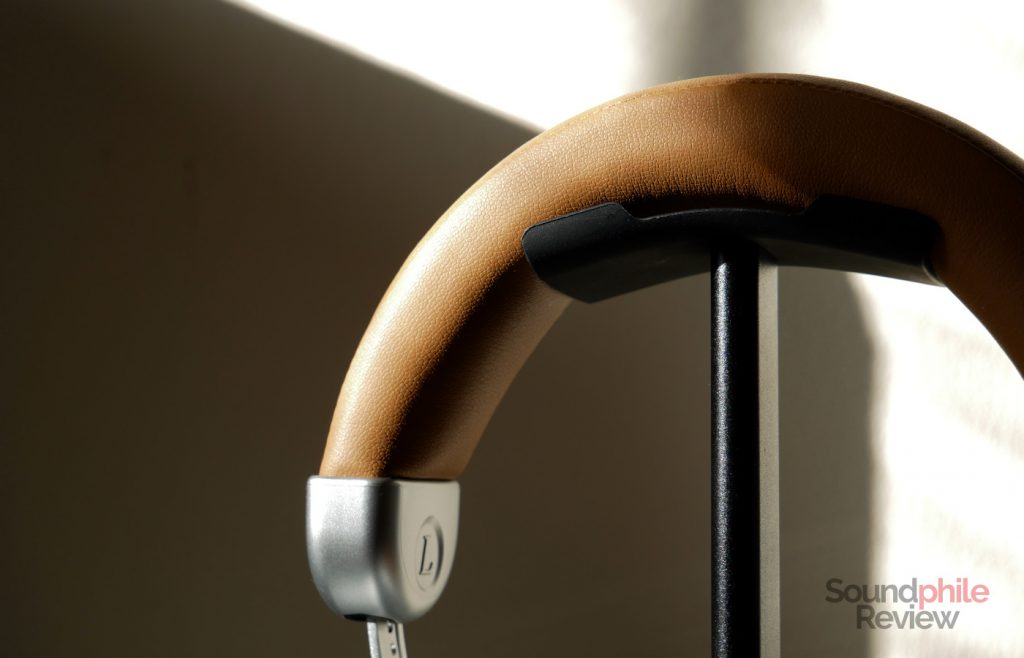
Comfort is not the best I’ve encountered: despite the headband having generous padding, it is quite firm (not to say hard), so it only helps so much. The lateral clamping force is quite small as well, so the headphones aren’t sustained at all by that and all their weight goes to the top of the head. The fact that there’s no good distribution of the weight on the headband contributes to making things worse. The lack of clamp also makes the headphones feel not entirely stable and secure on my head.
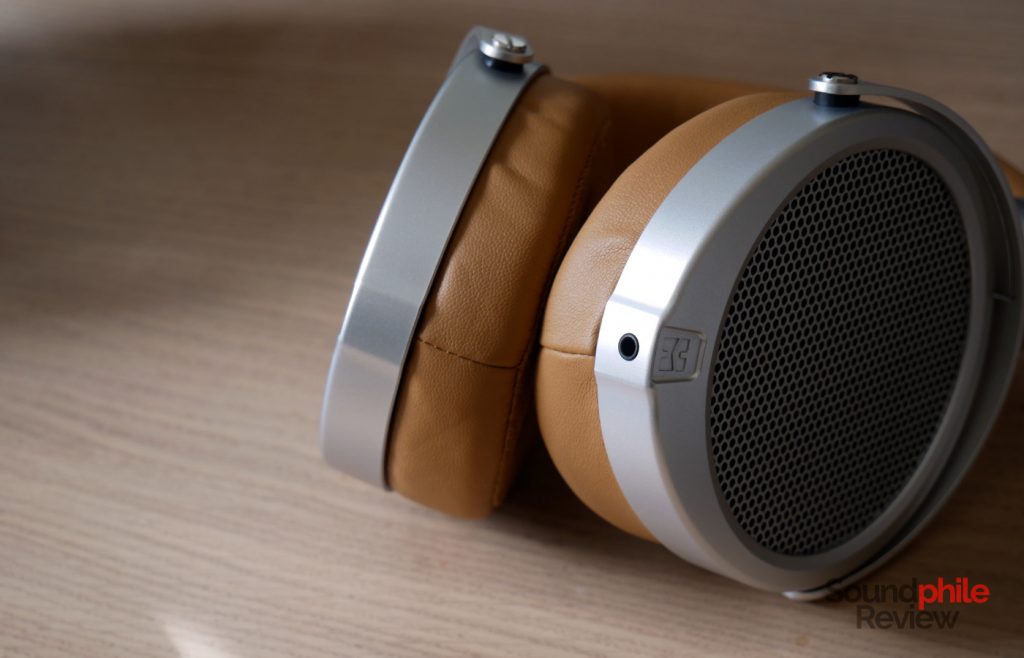
The cable provided by HiFiMAN is ironically much better in terms of feel and build quality than those included with the Ananda or the HE6se v2. It’s a classic cable, thick and quite stiff, with 3.5 mm jacks on both ends. It’s not the best cable I’ve seen (by quite a good measure) and its terrible stiffness is actually the main reason why you will want to use the headphones in wireless mode. Still, it’s more than 2 m long and it appears quite robust, with metal casings for both jacks, so it could definitely be much worse. It could be like that of more expensive headphones from HiFiMAN.
Extra Features & Battery Life
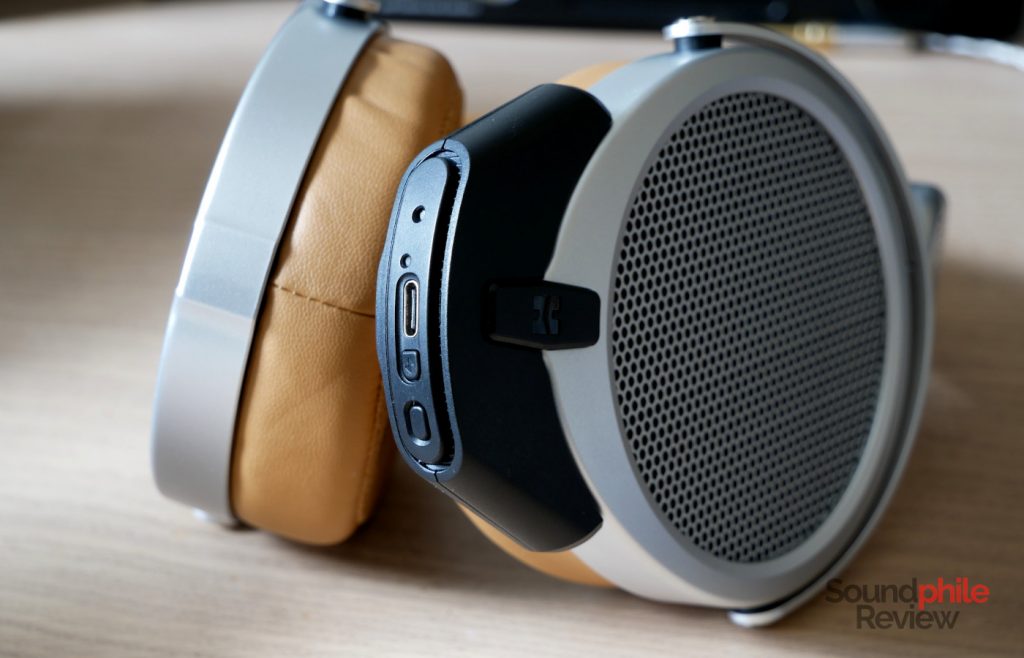
The Bluemini Bluetooth module offers a vast array of codecs on top of its Bluetooth 5.0 connectivity: in fact it offers SBC, AAC, aptX, aptX HD and LDAC – more than enough to satisfy even the most demanding audiophiles. It’s not the exact same as having a wired connection, but I would argue that it’s the closest you can get to that.
The range is quite good and it passes my favourite scientific test, which is walking into the kitchen while my computer is in the studio, easily. Stability is also quite great and I haven’t experienced almost any dropouts or stuttering.
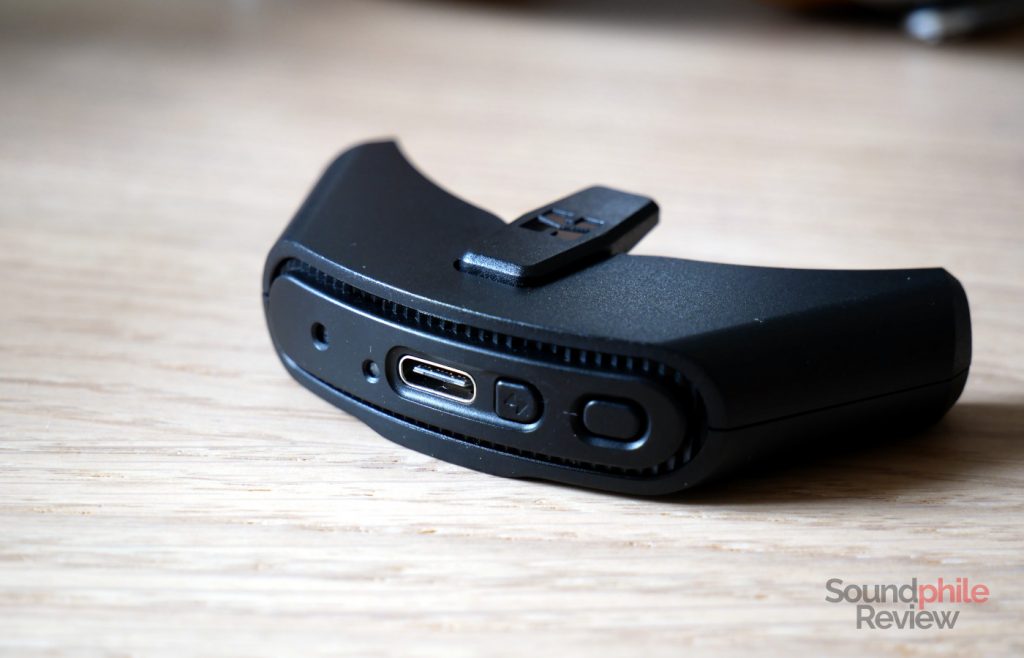
In theory the Bluemini should be able to output 1,125 mW of power, but in reality it’s limited to 230 mW. That’s still quite a lot of power for a device this small! It’s more than enough to drive the Deva to deafening levels, so I usually kept it to about 15% volume and it was plenty enough.
The Bluemini has just one button and it doesn’t allow you to adjust the volume, nor to skip to the next or previous track, nor to do anything but play or pause the music and answer, close or reject a call. It’s a very basic device with very basic features, but that’s by design: it is meant to just provide Bluetooth connectivity to allow you to listen to music wirelessly, so basically anything on top of this is an added bonus but not something that’s to be expected. It’s a way to make an audiophile headphone wireless, not a way to make an audiophile headphone compete in features with native Bluetooth headphones from the likes of Sony or Bose.
This is also why it didn’t surprise me that the onboard microphone does a bad job at capturing the voice: it was added for convenience, not to be the best in class. Nonetheless, I think that if you include a feature on a product you have to make it work right, otherwise it’s best if you don’t include it at all (right, Cayin?).
In order to avoid draining the battery excessively, the Bluemini appears to shut down after 10 minutes of inactivity. The manual says that this happens when no device is connected, but I have witnessed it doing it even when connected.
What I really don’t like is how my unit manages low-battery situations: it just turns off with no warning at all. One moment you’re listening to music, the next it’s silent and you’re left to wonder what’s happened. One time it happened to me that the device turned off, so I turned it on again and at that point the device gave me a “low battery, please charge” warning… only to shut down immediately after.
Apart from this, battery life isn’t bad at all: HiFiMAN says it’s between 7 and 10 hours and that figure is correct, having experienced about 8 hours of playback myself. It then takes about one hour to charge the battery back, so it’s really fast.
The Bluemini can also work as a USB DAC: just connect it to any sourc with USB Audio output and you’re good to go. The company even allows you to use the headphones with smartphones that lack a 3.5 mm output by using a USB-C to USB-C cable, and if you’d rather not use the phone’s battery to charge the Bluemini, you just need to press the power button for two seconds before connecting the device to your phone. Quite neat!
Sound & Specs
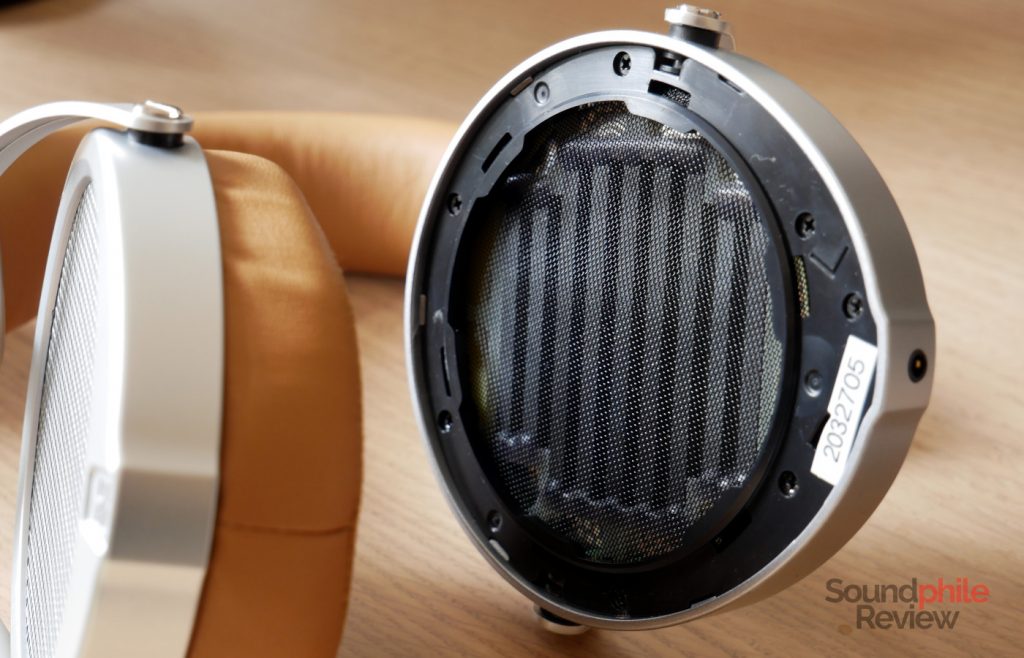
I’ve mostly tested the HiFiMAN Deva using my laptop computer, an HP EliteBook 745 G5, running Linux with modules that enable high-quality codecs such as LDAC on PulseAudio. Source files were mostly FLACs in CD resolution.
HiFiMAN Deva |
| Frequency response | 20 – 20,000 Hz |
| Impedance | 18 Ω |
| Sensitivity | 93 dB |
| Bluetooth version | 5.0 |
| Codecs | SBC, AAC, aptX, aptX HD, LDAC |
As they have to be used in conjunction with the not-exactly-powerful Bluemini, the HiFiMAN Deva need to be easy to drive and they actually are: at 18 Ω impedance and 93 dB sensitivity, they are in the same class of IEMs (I mean, they have the same impedance as the IKKO OH10).
The Deva have quite a bright signature which privileges not just the upper area of midrange like most HiFiMAN headphones do, but the treble as well, making them sound very bright and open – sometimes too much, in my opinion. But they’re generally very likeable and good all-rounders.
Soundstage is quite wide, reaching far to both sides an giving you the impression of being in a very large space, but depth is comparatively limited. Imaging is quite great and I’ve found myself using the Deva for gaming quite often, and they really shone in that context with almost pinpoint-like accuracy at placing the various sounds on the stage. Instrument separation is definitely good, but in congested tracks there’s still a bit of smearing in the details of background instruments. All in all it’s an impressive performance for sub-$300 headphones and one of the best I’ve heard under $500 – HiFiMAN really nailed it.
Bass on the Deva is quite prominent and more abundant than in an ideal neutral target: it is especially emphasised in the lower mid-bass. There’s good depth, with good presence down to 30 Hz, that manages to balance things out a bit, though, so the overall sound is robust and full-bodied. Still, bass sometimes manages to be a bit too much and to muddy up the sound somewhat. Transients are fast and physical enough to make you feel them, with the decay being long enough to let them sound full (as opposed to being too fast and therefore sounding abrupt and dry); all in all I’d say it’s a fantastic middle ground for a headphone in the sub-$300 range. As a consequence, detail is quite good and comes out even in congested tracks with lots of things going on, though in those occasions it suffers a bit.
Midrange is tilted towards the upper area, which gets a generous amount of emphasis: it surely stands out and is quite clear, but that’s a bit to the expense of the rest. In fact sound is very bright and it’s sometimes almost metallic and tinny due to this; still, it manages not to overdo this emphasis and to stay in the range which makes it different but not wrong. In other words, you may not like it, but it won’t give you headaches or cause music to sound bad. This quite strong accentuation makes violins, electric guitars and other similarly high-pitched instruments more present and apparent in the mix, but it’s still such that male voices don’t sound thin. On the other hand, though, I think that midrange lacks a bit of clarity: it sometimes sounds a bit muddy and out of focus, like in Vessels by Philip Glass. Voices there are a bit distant and lacking energy. Adding a couple of dB in the 1 kHz area makes the situation much better. Just like with bass, midrange too has decently fast and physical transients as well as a moderately high level of details.
Treble is the most noticeable part of the whole spectrum, as it sits just in front of the already emphasised upper midrange. This bump in the upper area adds a lot of air and openness to the sound, making it very light and spacious; on the other hand, though, it may prove too intense for the people who are more sensitive to it. Despite this emphasis it’s definitely not sharp nor harsh, so the issue only reared its head during my listening sessions when there was a track that was especially rich of cymbals on its own, as otherwise it would not have been an issue at all. The level of detail is quite good for a $300 headphone and while it doesn’t enter micro-detail territory, you still get a very good sense of what’s going on.
HiFiMAN Deva Comparisons
I don’t have any other headphones that are completely comparable – which is, planar, open-back and Bluetooth. I’m going to just compare them to other headphones in a similar price range:
- HiFiMAN HE400i 2020 ($179): the Deva and the HE400i 2020 are quite similar, but there are a few notable differences between them. Bass is more prominent on the Deva, which offer better extension as well; it seems to me like there’s also better detail and better layering, while speed appears to be roughly comparable. I totally prefer midrange on the HE400i 2020, as it is more balanced and it has better overall presence: instruments sound more present and vivacious, though they’re not as detailed. Treble is less emphasised on the HE400i 2020, but it’s also a lot less detailed and less extended as well, with less air and breathing space. Soundstage is smaller on the HE400i 2020, imaging is less accurate and instrument separation is not on par. The difference is stark, even though the price difference is just $40 for the wired Deva.
- HiFiMAN Deva vs Sennheiser HD 6XX ($199): the HD 6XX are considered by many as the golden standard and at their price of $199 I definitely agree. Bass is not as deep or as physical on the HD 6XX as it is on the Deva, but it’s just as fast and maybe even a tad more detailed. While warmer, midrange is more balanced and more coherent, with instruments being placed more in the foreground and without significant dips or bumps that would alter their tonality; there’s a comparable amount of detail, but more physicality on the Deva. Treble is definitely more present on the Deva, where it’s airier and more extended, but the detail is comparable. Soundstage is much wider on the Deva, while I find imaging and instrument separation to be comparable.
- HiFiMAN Deva vs Cleer Audio Flow II ($199): I don’t have many full-size Bluetooth headphones, so I’m comparing the Deva to the Flow II even though they closed-back and noise cancelling. Bass is undoubtedly more present on the Deva, but the Flow II manage to compete in terms of depth (which is quite remarkable!); detail, speed and physicality are all in favour of the Deva. Midrange is more balanced on the Flow II, where it is less obscured by the bass and where it doesn’t have dips that compromise its tonality, but detail is incommensurably better on the Deva, which also has (again) better physicality and speed. Treble is comparably emphasised, but the Deva offer better extension and detail. Soundstage is far wider on the Deva (but that’s expected, given they’re open-back), just as imaging and instrument separation are better there. Overall I’m quite surprised by the Flow II, as they manage to stand their ground to the Deva – I find that rather exceptional.
Final Thoughts
If you are a frequent reader of this blog, you might now that I tend to under-hype products rather than create great expectations. I prefer to play it safe. I did the same with the HiFiMAN Deva here: I tried to give you a balanced picture that included descriptions of its features from both the good and the bad perspectives. The reality is that the Deva are absolutely fantastic for their price. Yes, they have a couple of issues, but they are awesome for what they cost and compared to the competition.
They have a wonderful, rich, open sound that has a bit of additional fun but still manages to aim for an overall relatively neutral target, plus they offer top-notch Bluetooth connectivity and decent build quality. My own pet peeve with them is the headband, which I find uncomfortable, but I realise I have special needs in this regard (thank you, genetics, I love you). All in all, HiFiMAN managed to smash my expectations for a mid-range product with the Deva. The great frequency response combined with very good technical ability and fast transients make these headphones a real gem. And it’s even more if you consider that it retails for just $219 in its wired version – the value of that one is just through the roof.
Now again, I’m usually not one to hype products. The Deva are so good, though, that if you didn’t catch my enthusiasm before you can definitely do so now. If you are on the market for a competent and pleasant open-back headphone below $300 that can also do wireless, look no further than the HiFiMAN Deva. They’re just superb.

